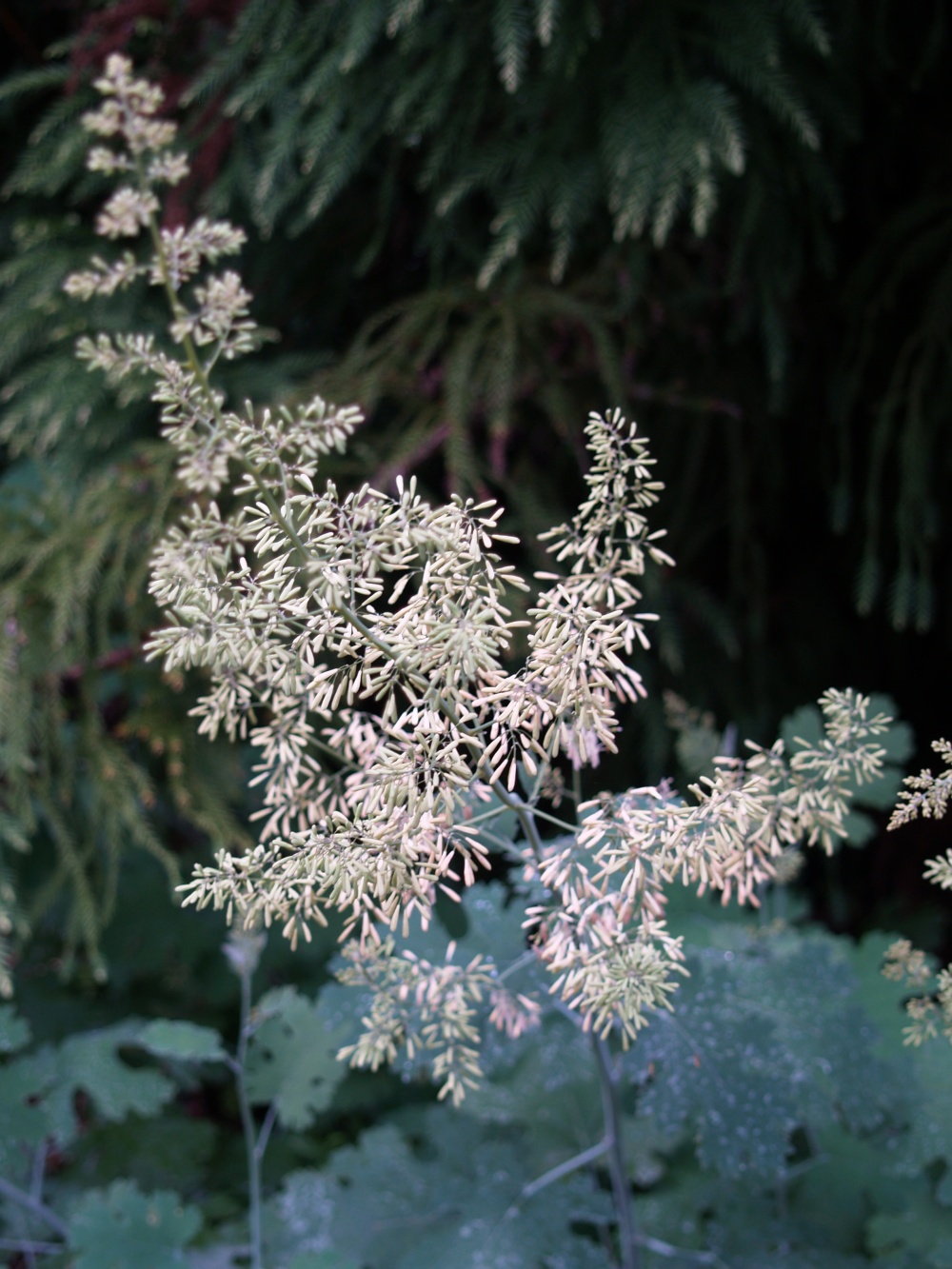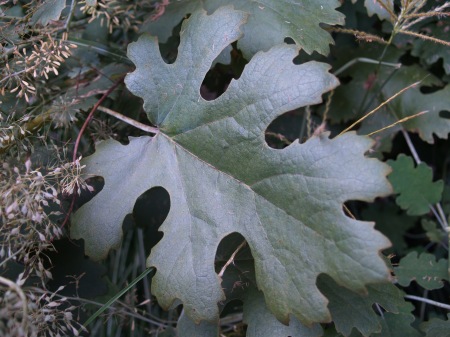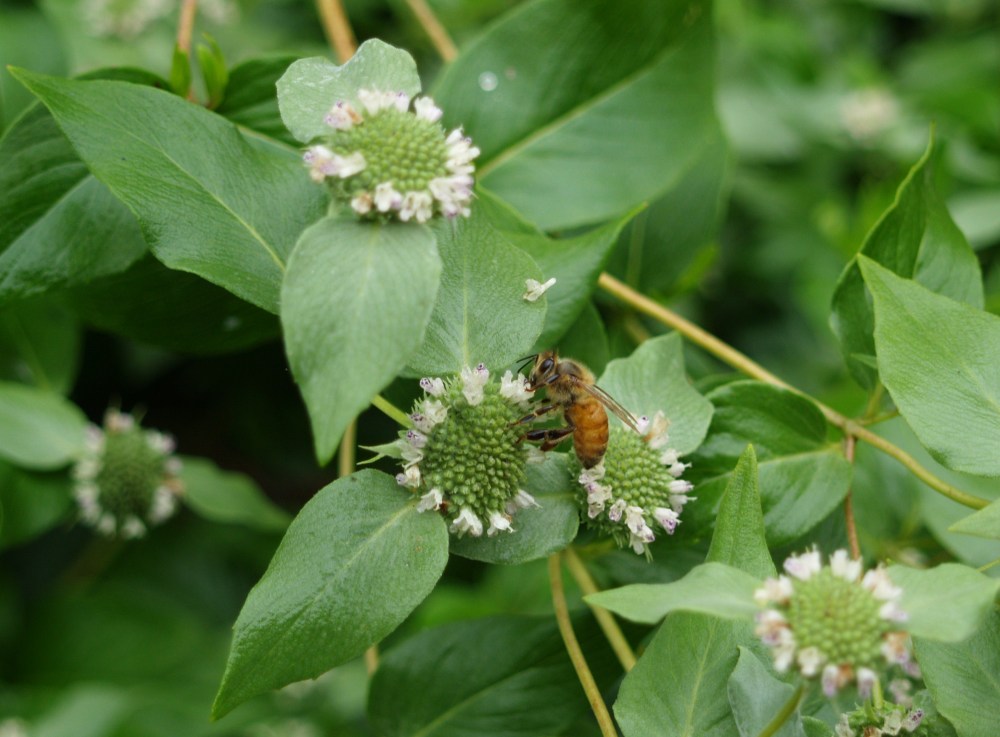A groundhog resided for several years beneath a mound of plume poppies (Macleaya cordata, below) in the rear garden. The dense clump provided ample cover for forays into the neighbor’s nearby vegetable garden, which is now fortified like Fort Knox to prevent further invasions, though the groundhog has departed.
Plume poppy can be a bit rambunctious, but here it is hemmed in by large hollies and cryptomerias so that it cannot possibly escape except through a small opening in front where it is easily controlled. My wife claims that she rescued a young variegated dogwood in this spot from being overwhelmed by the poppy a year ago, but I have my doubts. Typically, I’m the one spinning tall tales, but perhaps this habit is rubbing off on her. In any case, plume poppy does not spread uncontrollably like bamboo, and even in damp soils I suspect it should not be much of a challenge to keep in bounds.
The blooms of the plume poppy promise somewhat more than they deliver (at least to my thinking). As the flowering stalks elongate its seems that the blooms will make a prominent show, but in fact the flowers are not substantial enough. The large, blue-green foliage is the poppy’s principle attraction, though I somehow figured when I first planted it that the leaves would be larger. Visitors to the garden seem to like it, and to fill an area between large evergreens it works wonderfully with a minimum of care besides having to chop off the tall stems from the previous year each spring.
I’m still undecided whether to recommend or warn against planting Mountain mint (Pycnanthemum virginianum, above). This exuberant native continues to expand, and after several years I’m beginning to question how well it plays with others. It has not yet overrun anything, but it spreads further each year, and grows taller so that I’m mildly concerned. An offending stem that pops up through the nearby daphne is easily plucked out, but pulling out ever more stems each spring is not what I had in mind.
Also, it seems that mountain mint has grown taller each year, and now it is nearly four feet tall (and perhaps closer to five). In the event of heavy wind and rain (which seems a near certainty), the entire unruly mass of stems leans in one direction or the other, and then the poor daphne is further threatened.
The top foliage of mountain mint is dusted in white, and though the flowers are small, the total of the disk of blooms and the white dusting is quite splendid. Bees, wasps, and hoverflies of all sorts fly in from miles around to buzz from one bloom to another from sun up to sundown, so that the visitor displays extreme caution in drawing near. But, I know that the bees are too enthralled by the mint to pay much attention to me, so I nose is as close as I please.
None of this should be construed to indicate that I don’t delight in the mountain mint, for I immensely enjoy stroking the foliage to savor the scent. On the other side of the increasingly unfortunate daphne is an aggressively spreading Clerodendron (above) and frequently I ask visitors to handle its foliage (which smells of bad peanut butter for lack of a better description), and then touch the mountain mint. By comparison, the mint is the clear favorite, and its acceptance is furthered by the explanation that it is not in the mint family, and also that it’s native.
The fact that I adore the mountain mint should, however, not persuade you that it is appropriate for your garden unless you are inclined to do battle with its enthusiastic nature.